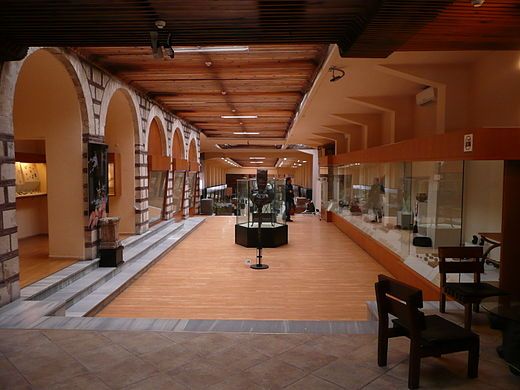Agac Ayak Mosque, Ankara
The Agac Ayak Mosque was built in the 18th century, and is notable for its fine Ottoman architecture.

The Agac Ayak Mosque was built in the 18th century, and is notable for its fine Ottoman architecture. Agac ayak translates to Wooden foot, and the mosque gets its name from the several wooden columns supporting it. While it has a simple façade with a short timber minaret, its interiors display fine wooden craftsmanship, with a magnificent ceiling and decorated pews.
Hours
Sun
NA
Mon
NA
Tue
NA
Wed
NA
Thu
NA
Fri
NA
Sat
About Agac Ayak Mosque
Merkez Sk., Altındağ, Turkey
Agac Ayak Mosque and Nearby Sights on Map

Ankara Citadel
The origins of the Ankara Citadel are not known

Ankara Roman Theatre
The ruins of an ancient Roman theatre dating back to the 2nd century AD can be seen here

Hacı Bayram Mosque
The Haci Bayram Mosque is dedicated to Sufi poet Haci Bayram, who founded the Bayrami sect

Temple of Augustus and Rome
The remains of the Augusteum or Temple of Augustus and Rome can be seen here

Cengelhan Rahmi M. Koc Museum
The Cengelhan Rahmi M Koc Museum is an industrial museum tracing the historical development of transport, communications and engineering, through a wide variety of artifacts that include early automobiles, rail transport items, communications and navigation tools, scientific instruments, models and replicas of early communications equipment

Yeni Mosque
The Cenab Ahmed Mosque, also known as the Yeni (New) Mosque, is the largest Ottoman mosque in Ankara

Museum of Anatolian Civilizations
The Museum of Anatolian Civilizations traces the history of Turkey through the ages starting from the Paleolithic era

Ahi Elvan Mosque
The Ahi Elvan Mosque was commissioned by Ahi leader Ahi Elvan Mehmet Bey in 1382, and restored by Sultan Mehmed I in 1413

Roman Bath
Excavated ruins of a typical Roman bath can be seen on Cankiri Street

Erimtan Arkeoloji ve Sanat Muzesi
The new Erimtan Archaeology and Arts Museum showcases Yüksel Erimtan’s collection of archaeological finds dating from the Bronze Age, along with contemporary art